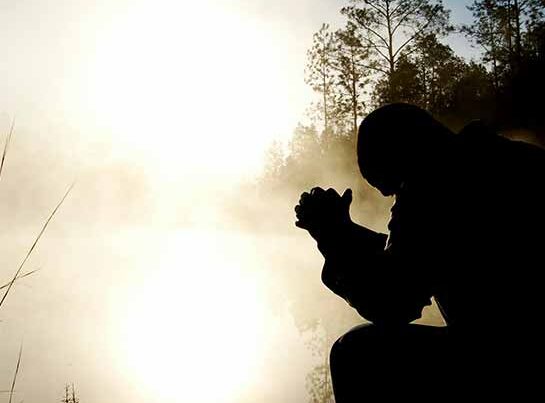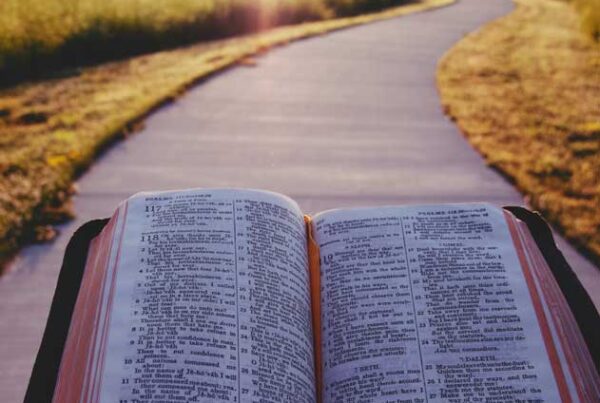THE MEANING OF BLOOD IN THE OLD TESTAMENT
- Why would we go to the Old Testament before speaking directly about the blood of Jesus? Answer:
- The gospel is for the Jew first. Rom. 1:16.
- Every Jew would understand blood, based on the teaching he or she would have received already.
- There would be little need to say more, once it was understood that the blood of Jesus took the place of the blood shed by sacrifices under the Old Covenant.
- There is no discontinuity between the Old Testament and the New Testament.
- Every new convert would know that the faith of Christ had its roots in the God of Israel.
- Therefore, the teaching about the bloodshed in ancient Israel would underlie the Atonement of Christ and all its implications.
- The common use of the way the blood shed was understood in ancient times would carry over in its fulfilment in Christ. Heb. 10:1.
- The `law of first mention’.
- A time-honoured hermeneutical method is especially relevant for the teaching on the subject of blood.
- Hermeneutics (def.): the science of biblical interpretation.
- Many Bible teachers consider this fundamental to much theological interpretation.
- The `law of first mention’ (defined): the way a word is first used in the Bible will be the way this word is largely understood thereafter. For example:
- Sin. Gen. 4:7. Sin, not doing what is right, leads to mastery over us.
- Covenant. Gen. 6:18. Its first use was to be the way it would be generally understood thereafter: what God promises to do.
- Faith. Gen. 15:6. Faith is essentially believing God.
- Tears. II Kings 20:5. God takes special note of our tears.
- The first use of `blood’: `The LORD said, “What have you done? Listen! Your brother’s blood cries out to me from the ground.”‘ Gen. 4:10.
- Abel’s blood cried out to God.
- It was an appeal for God to act.
- It was literal blood, which fell into the ground.
- God heard the cry.
- The blood continued to make its own appeal, even though the person whose blood it was had died.
- When God first required blood from a sacrifice. Ex. 12.
- Literal blood was required, not just the taking of life. `And they shall take some of the blood and put it on the two doorposts and on the lintel of the houses where they eat it.’ Ex. 12:7.
- Each man was to take a lamb for his family. Ex. 12:3.
- The lamb was to be slaughtered. Ex. 12:6.
- The blood was to be visibly sprinkled on the sides and tops of door frames with a bunch of hyssops. Ex. 12:22.
- The blood was s sign. `The blood will be sign for you on the houses where you are.’ Ex. 12:13.
- It was visible to one another; the community had a common identity — the blood of a lamb.
- It was a testimony against false gods. `For I will pass through the land of Egypt on that night and will strike all the firstborn in the land of Egypt, both man and beast; and against all the gods of Egypt I will execute judgment: I am the Lord.’ Ex. 12:12.
- The blood was visible to God. `When I see the blood.’ Ex. 12:13.
- This is what God would look for when the destroyer passed through Egypt.
- Note: it did not say, `When you see the blood,’ but rather, `When I see the blood.’
- The blood was protection. `And when I see the blood, I will pass over you; and the plague shall not be on you to destroy you when I strike the land of Egypt.’ Ex. 12:13.
- It was protection from God’s wrath. `I will pass over you.’
- It was protection from the destroying angel. `For the Lord will pass through to strike the Egyptians; and when He sees the blood on the lintel and on the two doorposts, the Lord will pass over the door and not allow the destroyer to come into your houses to strike you.’ Ex. 12:23.
- Note: A distinction is made between Him (the Lord) and the destroying angel; `He [the Lord] will not permit the destroyer to enter your houses and strike you down.’
(1) We may infer that the destroying angel (1 Cor. 10:10) was the devil.
(2) The devil was given the power of death. Heb. 2:14.
(3) The devil was often doing his work when God’s instrument of protection is removed or non-existent. See 1 Chron. 21:1.
- The blood distinguished blood covered people from those not covered by the blood.
- The angel of destruction would have killed all the firstborn living in Egypt, including those of Israel.
` For I will pass through the land of Egypt on that night and will strike all the firstborn in the land of Egypt, both man and beast; and against all the gods of Egypt I will execute judgment: I am the Lord.’ Ex. 12:12.
- But because of the blood, he could not to destroy the firstborn of Israel.
` the plague shall not be on you to destroy you when I strike the land of Egypt.’ Ex. 12:13.
- The blood took the place of those who otherwise would have been killed.
- It was a substitute for the lives of those who were under the threat of death.
- Their sole hope was the blood that intervened.
- The blood was a covering. “Blessed is he whose transgressions are forgiven, whose sins are covered.’ Ps. 32:1.
- The sprinkling of the blood.
- The blood of the covenant. Ex. 24.
- Young bulls were sacrificed as offerings to the Lord. Ex. 24:5.
(1) One half of the blood was put in bowls by Moses.
(2) The other half was sprinkled on the altar. Ex. 24:6.
- The Book of the Covenant was read to the people.
(1) They responded, “All that the Lord has said we will do, and be obedient.” Ex. 24:7.
(2) This is when the people, not God, took the Oath.
- The blood was then sprinkled on the people. `Moses then took the blood, sprinkled it on the people and said, “This is the blood of the covenant which the Lord has made with you according to all these words.” Ex. 24:8.
(1) All that was seen above pertaining to the blood at Passover is to be understood here.
(2) What the blood did then was needed again, only this time being sprinkled not on what was material but on their very persons.
- Consecration of priests. Ex. 29.
- A ram’s blood was sprinkled on the altar. Ex. 29:16.
- Another ram was slaughtered and some of its blood was placed:
(1) On the lobes of the right ears.
(2) On the thumbs of the right hands.
(3) On the big toes of the right feet. Ex. 29:19-21.
- The offerings.
- The burnt offering. Lev. 1.
- The fellowship offering. Lev. 3.
- The sin offering. Lev. 4 & 5.
- The guilt offering. Lev. 7.
- The Mercy Seat: The Day of Atonement. Lev. 16.
- The High Priest went into the Holy of Holies once a year, but never without blood, which he offered for himself and for the sins the people had committed in ignorance. Heb. 9:7.
- He took the blood of a bull and a goat. Lev. 16:14-15.
- He sprinkled it with his finger seven times on the cover, or lid, of the Ark of the Covenant (called the Mercy Seat). ` He shall take some of the bull’s blood and sprinkle it with his finger on the east side of the mercy seat; also, in front of the mercy seat he shall sprinkle some of the blood with his finger seven times.’ Lev. 16:14 AMP.
- The purpose of this ritual was to cleanse the sanctuary (Lev. 16:18), the priest and his household (Lev. 16:6) and the people. `For on this day atonement shall be made for you, to cleanse you; from all your sins you shall be clean before the Lord.’ Lev. 16:30 AMPC
- The prayer of David, the returning backslider: `Cleanse me [by sprinkling] with [a bunch of] hyssop and I shall be clean; wash me and I shall be whiter than snow.’ Ps. 51:7.


